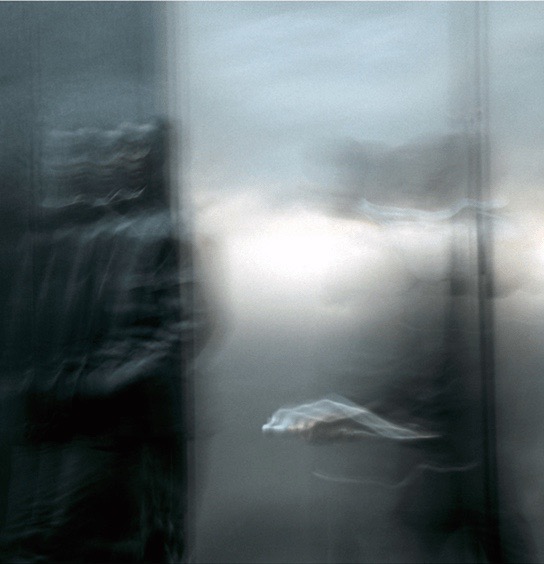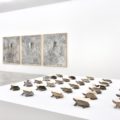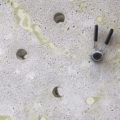Errance, intuition and illusion
How to reveal the invisible?
This is a question that has haunted the human mind since the dawn of time. How can we reveal what we cannot see or feel, but which we nevertheless sense? How to articulate an intuition? How to give it substance? And where does this intuition come from? Preview of an overly sensitive reality or desperate gestures of a mind blinded by its limits? Distinguishing the presentiment from the illusion is not easy….
Night
Fear
Question
Intuition
Moonlight
Illusion?
Cloud
Doubt…
Questioned!
Dark night
Intuition again
Gesticulations
Jolt
Affirmation!!!
Artificial light
Doubt…
Night
Supplice
Reassure me!
Torture
Impossible?
I doubt
Me
Everything
Relativism
Dissatisfaction
Doubt
Again
Always
Find the exit
Or blend in forever
In the night that surrounds us, doubt and thought coexist, get closer, bond, embrace each other and cannot be divided. The resulting questions have long been the prerogative of priests and philosophers: when physics struggles to fully satisfy human questionings, metaphysics (1) and religion naturally take up the baton. There are then two ways of giving back to the perceptible these realities that escape it: the rite (the liturgical gesture shapes the supernatural power) and art (which gives form to a sensitive and suprasensible vision of the world), both material incarnations of supra-material intuitions.
This embodiment of the supernatural, invisible that makes us feel and play with our senses, is at the heart of the collective exhibition and ninth edition of the Da-End Gallery’s annual cabinet of curiosities. In the darkness so characteristic of this place, by a softly affixed light, works are revealed at the borders of the sensitive, at the margins of strangeness. Immersed in mysticism, these forms are arranged in space, occupying it as much as it hides them, merging into it. These shapes, the night would hide them, but the light comes to take them away! They are then revealed to us, come out of their obscure retreat and show themselves to be seen, in the intimacy of a space of confidentiality.
Lying on the ground, a base for any mattress, a child sleeping, curled up. His body is covered with feathers. They are blue, black and purple. All silver in the sun, they shine. He seems so alive this kid, we’re almost afraid to wake him up. It could be, perhaps, one day. Or is it already? In the spirit world, surely, it seems so real. With this hybrid creature, Lucy Glendinning questions the development of the genetic sciences, towards super-humanity. It seems so far away! However, the child seems very familiar to us….
Will we be able to resist it?
Of coursed not, I say.
The endless opportunity
to better our future,
to improve the human race,
and solve the endless
problems of more.
Will we be able to resist it?
Once we have cured the sick,
to improve the well,
what fun we’ll have
making useful modifications
improvements and special vocations.
Will we be able to resist it?
A decoration applied with
a gene, not a needle.
To breath under water
Wouldn’t that be useful,
or to fly who could resist that.
To be special we all want it,
once we are no longer a child.
Will we be able to resist it?
Is evolution ours now?
Will it be like most,
money will buy the prize?
You will need to be
someone like a Rothschild
to be able to fly.
Or to glow in the dark
a Geldof or a Spark.
Is it about to change,
are we to be in charge? (2)

We leave the child, he always sleeps. On the other side of the room, on a black piece of furniture, are placed objects. Above, a painting. Celia Nkala and Markus Akesson answer each other. A moulded head, plaster gilded with copper leaf, broken. A painted profile, behind a veil of wooded motifs, hidden. Two disowned faces, denied identities, revealed yet on the altar of vanities. I want to see you. Without being able to look at you, I recognize you. Did you think you were going to disappear? That a veil would cover your existence? That a breakage would hide your presence? This is not the case! It’s the anecdotal you’re repressing, the temporary, I know that. Behind that special mask, I can see you!
Let’s take a step back. The works come alive, come out of their immobility for anyone who wants to feel it, awaken from their formal rigidity. In our minds they set themselves in motion, sometimes even let themselves be inhabited. Spirits are running on the walls. Without bodies, free of any physical envelope, they seek a receptacle that would heal their mad wanderings. These shelters for exile are the works that, temporarily, serve as a home for solitary spirits. La muse aux limbes is a video installation by Colombian artist Nieto. Spirits circulate in space, they are laughers, mockers, show-offs. Regularly, according to their wanderings, they come to inhabit the works, impose themselves on them, melt into them. Then the works live with another presence and we, amazed spectators of such an encounter, are confronted with their spiritual power, invisible essential often forgotten.
Finally, the exhibition takes place between two waters, in the ocean of uncertainties. A fluid flow between intuition and illusion, perception and imagination, the unknown frightens, the doubt it generates worries, and yet sets in motion, makes the world grow in enchantment.
—
We readily believe that the function of art is to represent the visible, since it is from this that it draws its language. Perhaps, on the contrary, its essential function is to represent the invisible, this invisible one of which, from the very beginning, man has had anguish, perceiving forces that surpassed him and of which he was the toy; he has first located them in a tangible presence: tree, spring, rock, then he has embodied them in superhuman figures: the Gods, but made at his appearance, conceivable, therefore reassuring. It is only belatedly and rarely that he has risen to sense what escapes his means of perception and imagination: the unknown, the unknowable. It took the gap of the mystical impulse. (3)
(2) Lucy Glendinning, A Feather Child.
(3) René Huyghe, « L’art, entre visible et invisible », Revue des deux mondes, janvier 1987. Translated by the author.
Featured image: Lucy Glendinning, Feather Child 6, 97x62x40cm, Jesmonite, cire et plumes (caille, oie), 2012-13. Courtesy Da-End Gallery, Paris.
For more information : http://www.da-end.com/cabinet-daend-09






